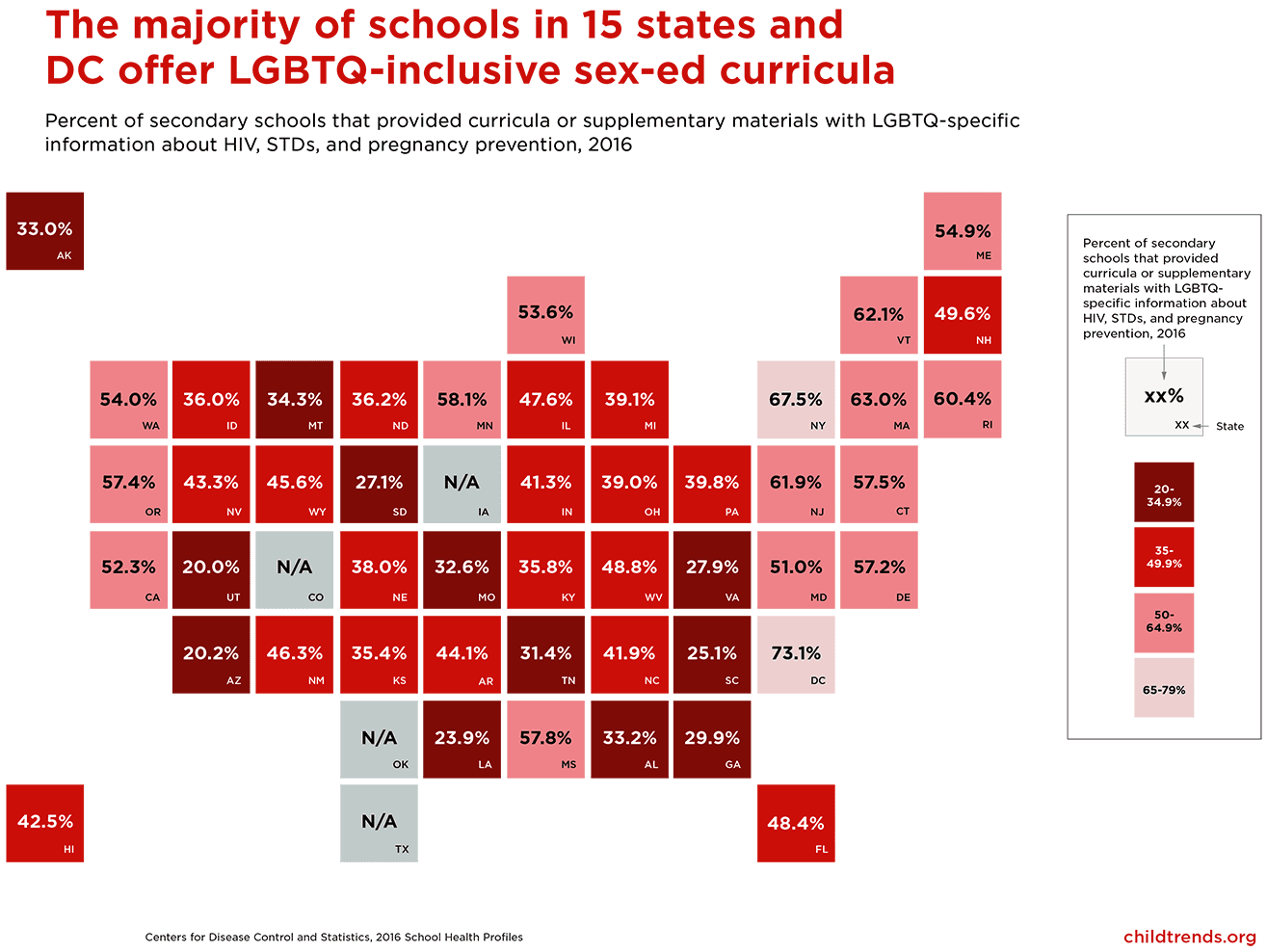The majority of schools in 15 states and DC offer LGBTQ-inclusive sex-ed curricula
Author
This blog has been updated here to reflect the most recent data and new analysis.
According to 46-state data from the Centers for Disease Control and Prevention (CDC), the majority of schools in 15 states and the District of Columbia reported offering sex-ed curricula or supplementary materials that included information about HIV, sexually transmitted diseases (STDs), and pregnancy prevention relevant to lesbian, gay, bisexual, transgender, and questioning (LGBTQ) students in 2016 (the most recent year for which data are available). In the remaining 31 states, less than half of secondary schools reported offering such curricula or supplementary materials. Utah had the lowest percentage of secondary schools (20.0 percent) that provide such curricula, followed closely by Arizona (20.2 percent). New York had the highest percentage of schools that offer such inclusive curricula (67.6 percent). Data are not available from four states (Colorado, Iowa, Oklahoma, and Texas).

While most LGBTQ youth successfully navigate adolescence, others experience challenges due to stigma and discrimination. An emerging body of research finds that the stress caused by this stigma and discrimination can negatively impact the health of LGBTQ young people. Resources and support can help address health disparities between LGBTQ youth and their straight, cisgender peers.
One health challenge for LGBTQ youth, relative to their straight, cisgender peers, is a higher likelihood of engaging in certain risky sex behaviors, which can be addressed in part by providing LGBTQ-relevant sex-ed information in schools. Data from the CDC’s 2017 Youth Risk Behavior Survey (YRBS) demonstrate that lesbian, gay, and bisexual youth are significantly more likely than their straight peers to have ever had sex, to have had multiple sexual partners, to have had sex before age 13, and to have sex without a condom. Data for trans youth are more limited. However, a recent CDC report of data from 10 states and 9 urban school districts that piloted a question about transgender identity on the 2017 YRBS indicates that a greater percentage of trans students (whose gender identity does not align with the sex they were assigned at birth) reported first having sexual intercourse before age 13 and having had four or more sexual partners, relative to cisgender students (whose gender identity aligns with their sex). Trans students were also more likely than their cisgender peers to report not using any contraception method during their last sexual intercourse.
One way schools can help address stigma and discrimination and reduce risky sexual behavior among LGBTQ youth is to ensure that they have the same access to relevant sexual health education as their straight, cisgender peers—for example, by including LGBTQ-relevant information as a part of education about HIV, STDs, and pregnancy prevention. Research from the University of Pittsburgh finds that exposure to LGBTQ-relevant sexual health instruction is associated with reductions in risky sexual behavior, lower risk of depression, and fewer reports of bullying among LGBTQ youth. Research conducted by the CDC and others also finds that exposure to LGBTQ-relevant sexual health instruction is associated with reduced suicidal thoughts among all youth, including straight and LGBTQ youth.
© Copyright 2024 ChildTrendsPrivacy Statement
Newsletter SignupLinkedInThreadsYouTube